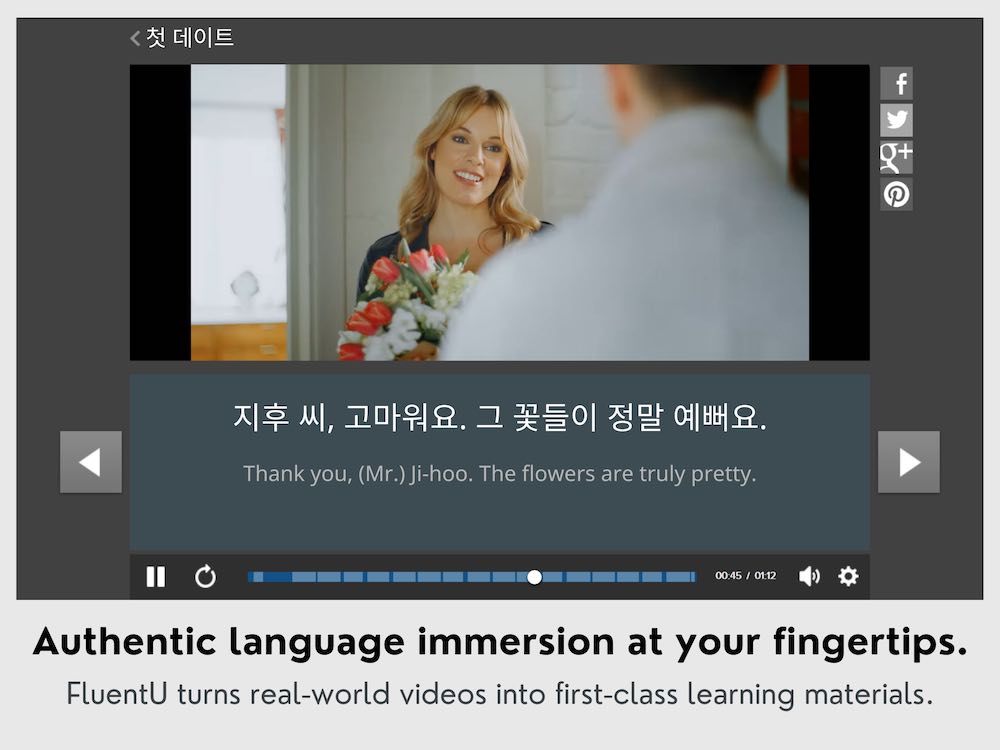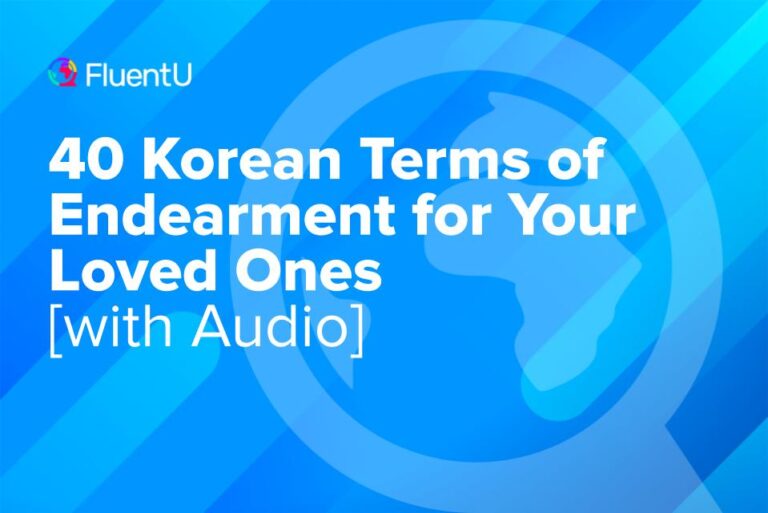How to Say “Hello” in Korean [with Audio]
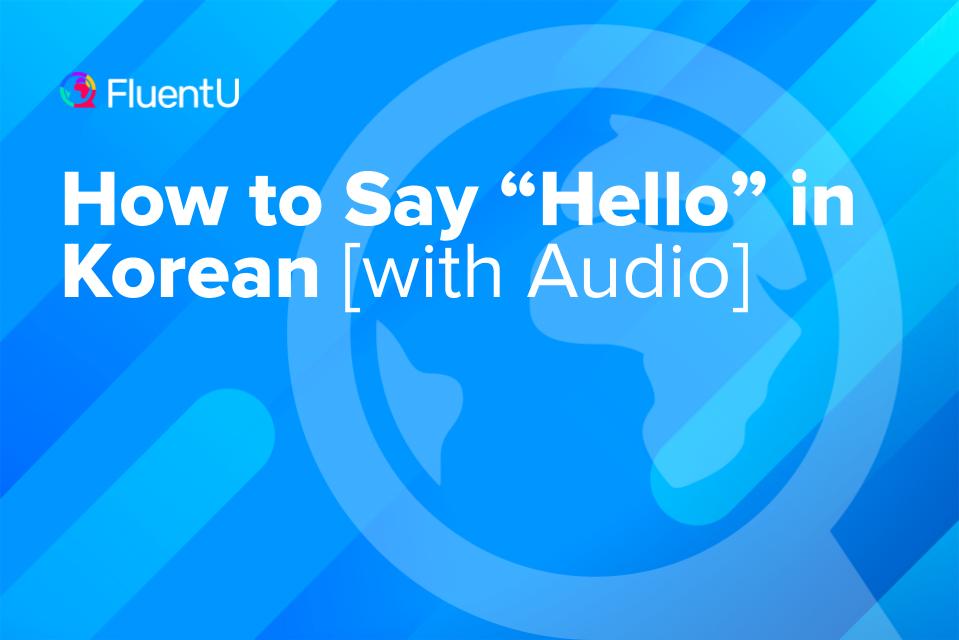
Saying “hello” in Korean is a good place to start when learning the language. But Korean greetings aren’t as simple as “hello.” They change depending on your relationship with the person you’re greeting and how casual or formal the situation is.
Learn how to say “hello” in Korean at various levels of formality in this post, so you’ll be ready to start conversations with ease.
Download: This blog post is available as a convenient and portable PDF that you can take anywhere. Click here to get a copy. (Download)
Formal Korean Greetings

안녕하세요 — Hello
Pronunciation: An-nyeong-ha-se-yo
This is the most common polite greeting. You can use it when meeting someone for the first time and when greeting someone older than you, an acquaintance or someone working in a service capacity.
You can also add a question mark to ask “How are you?”: “안녕하세요?” The phrase literally means something along the lines of “Are you at peace?” It’s often answered with “안녕하세요” right back, and commonly accompanied by a quick bow.
안녕하십니까 – Hello
Pronunciation: An-nyung-ha-sip-ni-ka
This is an even more formal greeting than the previous one. Nowadays it’s pretty much only heard on news reports or to greet customers in a very respectful way.
여보세요 — Hello? (when answering the phone)
Pronunciation: Yeo-bo-se-yo
“여보세요” is quite simple. It’s the standard polite greeting you use in Korean when picking up the phone.
만나서 반갑습니다 – Nice to meet you
Pronunciation: Man-na-suh-ban-gap-seup-ni-da
You’ll pretty much only hear this phrase in its formal form because it’s always used when meeting someone for the first time—a situation that calls for formal speech.
However, in more casual settings such as when meeting a friend of a friend, you could also say “만나서 반갑습이에요” (It’s nice to meet you).
It’s common to leave off the first half and just say “반갑습니다” .
잘부탁드립니다 — Please take care of me
Pronunciation: Jal-bu-tag-deu-lib-ni-da
This is a formal, very polite greeting sometimes used when making introductions, especially in professional settings. It’s usually said with a bow.
It’s a cultural phrase that doesn’t have an English equivalent, but it can express that you hope the person sees you positively or that you get along well, or to say that you look forward to working with them.
You can use it at a job interview, when starting a new job, when meeting the boss or other higher-ups in your company or when receiving a promotion.
저기요! — Excuse me!
Pronunciation: Jeo-gi-yo
This is a polite way to get the attention of someone you don’t know, such as a member of the waitstaff in a restaurant.
While it isn’t exactly a greeting, it can start a conversation nonetheless. While yelling to waitstaff might seem rude, this is considered normal in South Korea.
You might also use it for other completely normal reasons, like alerting someone to the possible presence of zombies on a train, as happens in the trailer for the popular horror movie “Train to Busan.”
Informal Korean Greetings

안녕 — Hi
Pronunciation: An-nyeong
This is a casual greeting you can use with friends, family and those younger than you. It can also be used as a casual farewell.
The trailer for the TV series “Cheese in the Trap” includes two examples of “안녕” and two of “안녕하세요” all within the first 10 seconds.
뭐 해? — What are you doing?
Pronunciation: Mwo-hae
This is a common casual greeting that you might use with friends, either when talking or texting. It means, “What are you doing?” and is kind of like saying, “What’s up?” To make this greeting more polite, simply add 요 to the end.
In the song “뭐 해” by Kang Daniel, the lyrics ask, “너는 지금 뭐 해?” or “What are you up to now?”
In a scene from the drama “Descendents of the Sun,” you can hear one character say to another, “여기서 뭐 해요?” which means, “What are you doing here?”
무슨 일이야? — What’s up?
Pronunciation: Museun-ir-iya?
This is a very casual greeting you can use with friends. Like in English, it can serve as a way to ask someone what they’re doing or just to say hi.
If you add 이게 to the beginning of the phrase, the meaning is more like “What’s happening?” or “What’s going on?”: 이게 무슨 일이야 (ige museun ir-iya).
야! — Hey!/Yo!
Pronunciation: Ya
This is a very informal phrase you can use to get the attention of your friends, but it can be considered extremely rude under other circumstances.
Depending on context and tone, it can sound like more of an angry interjection or call-out. It’s not something that you’d want to say to anyone you don’t know, or anyone other than a friend, significant other, younger sibling, etc.
Note that 야 can be tacked onto Korean names ending in a vowel as a suffix—while names ending in a consonant take 아 as a casual way of getting someone’s attention.
잘 잤어? — Did you sleep well?
Pronunciation: Jal jass-eo
This is a way of saying “good morning” in Korean. In a casual situation, you could respond to the question with “응, 잘 잤어” (Yes, I slept well) or just “응” (Yes).
“잘 잤어요?” is the standard polite form of this question. You can hear it at the start of this trailer for an episode of the drama “Clean with Passion for Now.”
To use the polite form in your answer, you could respond with “네, 잘 잤어요.” 네 is a more polite version of “yes.”
잘 지냈어? — How have you been?
Pronunciation: Jal ji-naess-eo
“잘 지냈어?” is something that you’d say to someone you know but haven’t seen in a while. This phrase and the previous one both share the first character 잘, which means “well,” and both of these questions ask about wellness regarding the past.
As with the phrase above, this is a yes or no question, so you can simply respond with “응” or “네” to say that you’ve been well, depending on your intended level of politeness or familiarity.
You can also flip the question into a statement. For example, “네, 잘 지냈어요” (Yes, I’ve been well).
밥 먹었어? — Have you eaten?
Pronunciation: Bab meo-geo-sseo
Use this greeting when you know someone quite well and want to express interest in their well-being.
밥 means “rice” and also “meal” in Korean. 먹었어 is the past tense of the verb “to eat.” So “밥 먹었어?” is literally asking if someone has eaten a meal.
However, this question carries a deeper meaning in Korean. It’s a warmer, more caring way of asking after someone you know, a point elaborated on in this video from Korean Hanna, which also includes a sample dialogue:
As is shown in the video, the standard polite version is “밥 먹었어요?”
오랜만이야 — Long time no see
Pronunciation: O-raen-man-i-ya
“오랜만이야” means “Long time, no see,” or “It’s been a while.” You can hear this phrase in the song of the same name by Korean rapper Loco.
Since you’d say this to someone you know but haven’t seen for a while, you might follow up with “잘 지냈어?” The polite version of this phrase is “오랜만이에요.”
You can hear many of these greetings in the humorous short film below, “여보세요.” It’s about Daryl, who wants to invite a girl he likes to a party, but tries to avoid calling her by first calling every other girl he can think of to invite.
- 여보세요 (Hello?) — You can hear this greeting at 3:48 (and see it in the title).
안녕 (Hi) — At one point, Daryl thinks he’s talking to a girl he knows when it’s actually her mother on the phone. As soon as he realizes his mistake, at around 3:33, we see him pivot from an informal “안녕” to a more polite “안녕하세요.”
야! (Hey!) — Daryl’s friend starts off a text with “야.” Daryl also tacks on 야 to the end of the names of some of the girls he calls, like at 2:43. His friend also uses 야 with him at 0:51.
잘 지냈어? (How have you been) — Since Daryl is calling people he hasn’t spoken to in a while, it’s appropriate that he uses this expression, as he does here at 2:45.
Levels of Formality in Korean Greetings
In this post, we deal mainly with two levels of formality: 반말 (casual speech or literally “half words”) and 존댓말 (polite or standard speech).
반말 is generally used with friends your age and those younger than you, while 존댓말 is used with strangers and those older than you. There are other levels, but that’s part of a more complicated discussion.
All you need to know right now is that some of the phrases can be expressed in two (or more) forms, and that if in doubt about which one to use, you should default to the polite form.
Resources for Learning How to Say “Hello” in Korean
Let’s quickly look at some great online resources that’ll help you nail down your knowledge of greetings.
- This video goes into the finer cultural points of 인사 (greeting). It lays out some of the more nuanced expectations surrounding greetings in Korean culture, such as how age affects who’s expected to greet whom and how.
- This video goes into the correct body language and etiquette when greeting people in Korean. Note that there are ways of bowing that are common in other Asian countries, but are not used in Korea!
- And did you notice how helpful it was to have video examples for so many of these phrases and cultural nuances? For more like that, you can use FluentU, a language learning program that allows you to find and study with real Korean videos.
FluentU takes authentic videos—like music videos, movie trailers, news and inspiring talks—and turns them into personalized language learning lessons.
You can try FluentU for free for 2 weeks. Check out the website or download the iOS app or Android app.
P.S. Click here to take advantage of our current sale! (Expires at the end of this month.)
Now that you’ve learned how to say “hello” in Korean, you can greet Korean speakers and maybe even start up a conversation!
Download: This blog post is available as a convenient and portable PDF that you can take anywhere. Click here to get a copy. (Download)
And One More Thing...
If you enjoyed this post, you're already halfway to having the time of your life learning Korean with FluentU!
FluentU makes it possible to learn with K-pop videos, funny commercials, entertaining web series and more. Just a quick look will give you an idea of the variety of FluentU videos on offer:

FluentU really takes the grunt work out of learning languages, leaving you with nothing but engaging, effective and efficient learning. It's already hand-picked the best videos for you (which are organized by level and topic), so all you have to do is simply choose any video that strikes your fancy to get started.
Each word in the interactive captions comes with a definition, audio, image, example sentences and more.
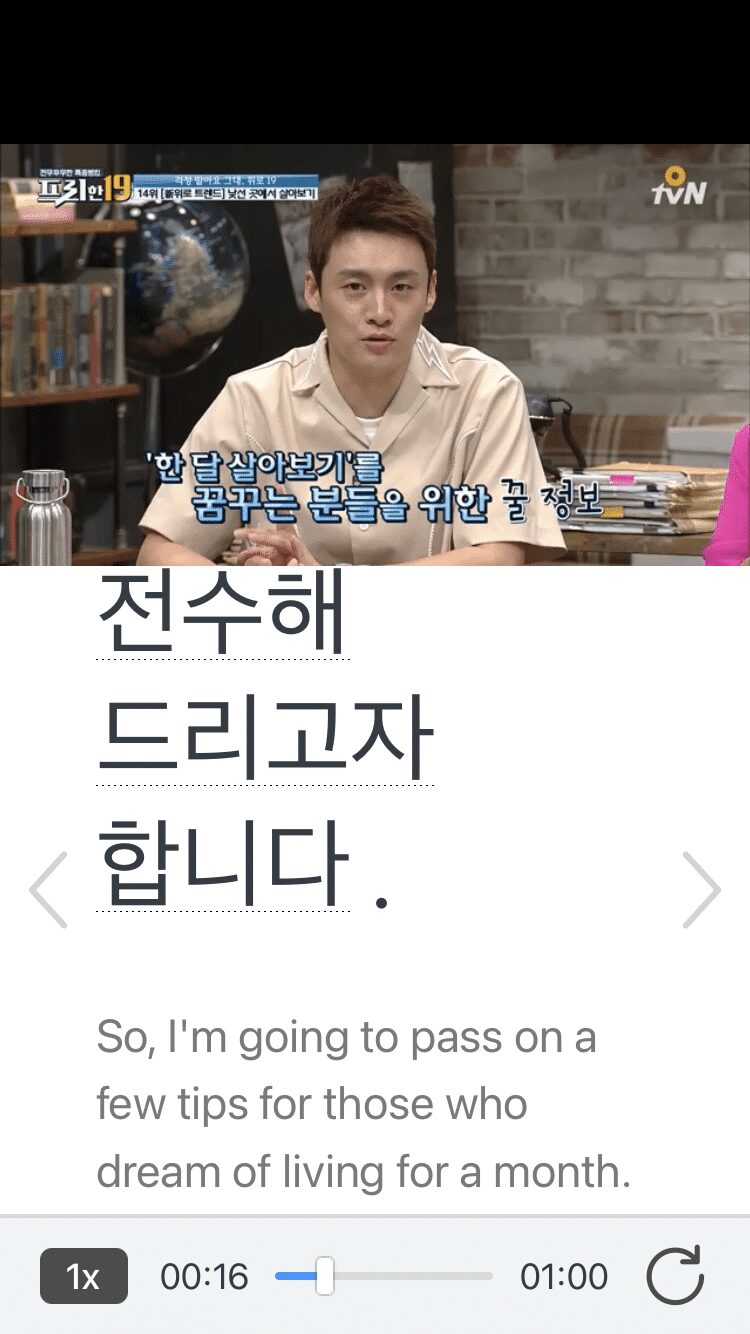
Access a complete interactive transcript of every video under the Dialogue tab, and easily review words and phrases from the video under Vocab.
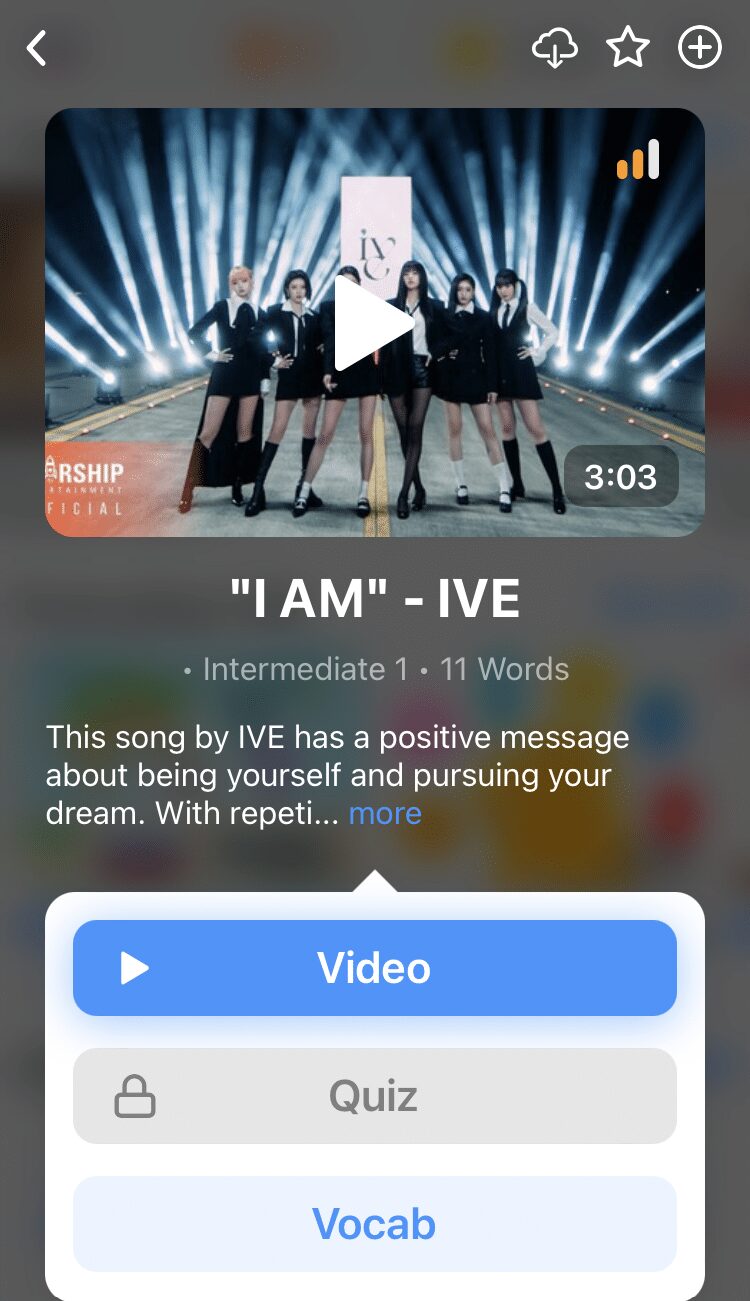
You can use FluentU’s unique Quiz Mode to learn the vocabulary and phrases from the video through fun questions.
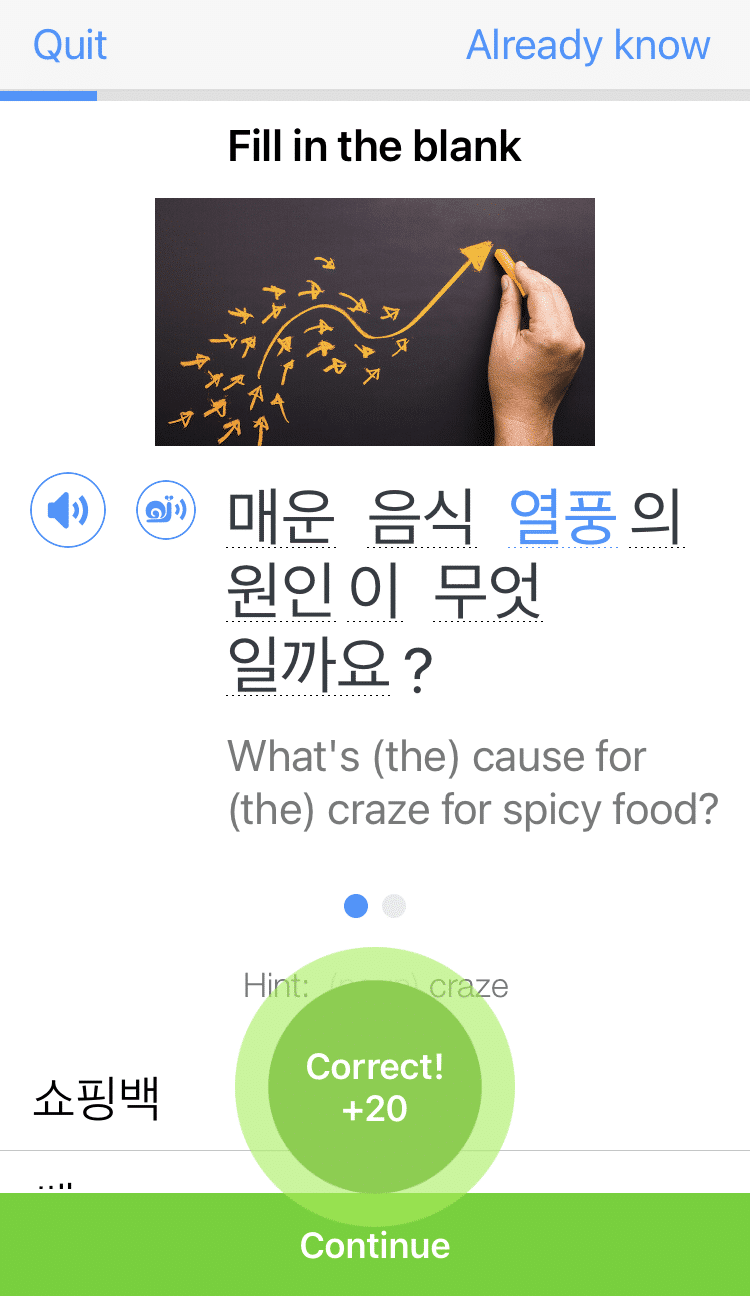
FluentU keeps track of what you're learning, and tells you exactly when it's time for review, giving you a 100% personalized experience.
Review sessions use video context to help embed the words in your memory.
Start using the FluentU website on your computer or tablet or, better yet, download the FluentU app from the iTunes or Google Play store. Click here to take advantage of our current sale! (Expires at the end of this month.)
